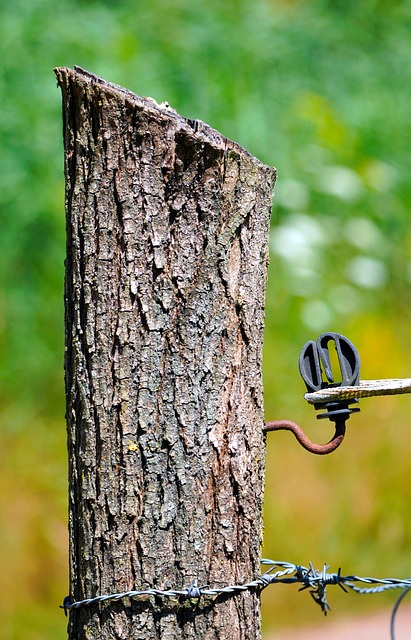Large properties present unique fencing challenges, demanding durable, cost-effective solutions that cater to extensive lengths and diverse landscapes. This article delves into strategies to overcome these hurdles, exploring a range of fencing options tailored to large-scale projects. From understanding specific needs to evaluating traditional materials against budget-friendly alternatives, we guide readers through DIY solutions, long-term savings, and eco-conscious choices. By the end, property owners will be equipped with knowledge to make informed decisions for their fencing investments.
- Understanding Fencing Needs for Large Properties
- Traditional Fencing Options: Cost and Maintenance
- Exploring Low-Cost Alternative Materials
- DIY Fencing Solutions: Saving on Labor Costs
- Long-Term Savings with Durable Fencing
- Environmental Considerations in Fencing Choices
Understanding Fencing Needs for Large Properties
Large properties present unique fencing challenges. The size and diverse terrain require solutions that offer both durability and cost-effectiveness. Property owners may need to balance aesthetics with functionality, considering factors like security, privacy, noise reduction, and visual appeal. Additionally, local regulations and zoning laws may dictate specific fence types or height restrictions, necessitating careful planning. Understanding these needs is the first step in selecting suitable fencing solutions that offer long-lasting value.
Traditional Fencing Options: Cost and Maintenance
Traditional fencing options, while aesthetically pleasing, often come with a high price tag and significant maintenance requirements for large properties. Materials like wood and metal require regular painting or staining to prevent rot and corrosion, respectively, which can be costly and time-consuming. Moreover, these materials are prone to damage from harsh weather conditions, animal intrusion, and other environmental factors, necessitating frequent repairs or replacements. For expansive lands, these ongoing expenses can add up, making traditional fencing impractical for those seeking cost-effective solutions.
Exploring Low-Cost Alternative Materials
In the quest for cost-effective fencing solutions, homeowners and property managers can explore a variety of alternative materials beyond traditional wood or metal. One emerging trend is the use of vinyl fencing, which offers durability, low maintenance, and affordability. Vinyl barriers are resistant to rot, rust, and decay, making them a long-lasting option that requires minimal upkeep.
Additionally, composite fencing materials, made from a mix of recycled plastic and wood fibers, have gained popularity for their eco-friendly appeal and versatility. These materials mimic the look of traditional wooden fences but with enhanced strength and stability, often at a lower cost than solid wood. They are also less prone to damage from weather conditions and pests, ensuring a longer lifespan and reduced replacement expenses over time.
DIY Fencing Solutions: Saving on Labor Costs
DIY fencing solutions offer an attractive cost-saving option for property owners looking to fence their large tracts of land. By taking on the project themselves, homeowners can bypass labor costs associated with hiring professional installers. This approach is especially beneficial for those with budget constraints or who enjoy hands-on projects.
There are various DIY fencing kits available in the market, designed for different types of fences and styles. These kits often include all the necessary materials and clear instructions, making installation more accessible than ever before. With a bit of planning and some basic tools, homeowners can create durable, aesthetically pleasing barriers that complement their property while saving money on labor expenses.
Long-Term Savings with Durable Fencing
Investing in durable fencing for large properties offers significant long-term savings. Traditional, lower-quality fences may require frequent repairs or replacements, leading to recurring expenses over time. In contrast, robust and well-maintained fencing solutions can withstand harsh weather conditions, intense sunlight, and heavy use, ensuring their longevity.
Durable fences also act as a valuable asset for property owners. They provide security, privacy, and aesthetic appeal, potentially increasing the overall value of your land. With minimal maintenance and reduced replacement costs, durable fencing becomes a cost-effective choice for large properties, offering both practical benefits and financial savings over the years.
Environmental Considerations in Fencing Choices
When considering fencing for large properties, it’s crucial to balance aesthetics and functionality while also being mindful of environmental impacts. Many traditional fencing materials, such as wood, can lead to issues like deforestation and treatment with chemical preservatives. As such, eco-conscious homeowners are increasingly opting for alternatives that are both durable and environmentally friendly.
Reclaimed materials, recycled plastic, and certain types of metal offer sustainable solutions that minimize the carbon footprint associated with new material production. These options not only reduce waste but also contribute to a more vibrant and diverse landscape. Additionally, choosing native plant species along the fence line can enhance biodiversity, provide habitats for local wildlife, and create a natural barrier that requires less maintenance over time.
